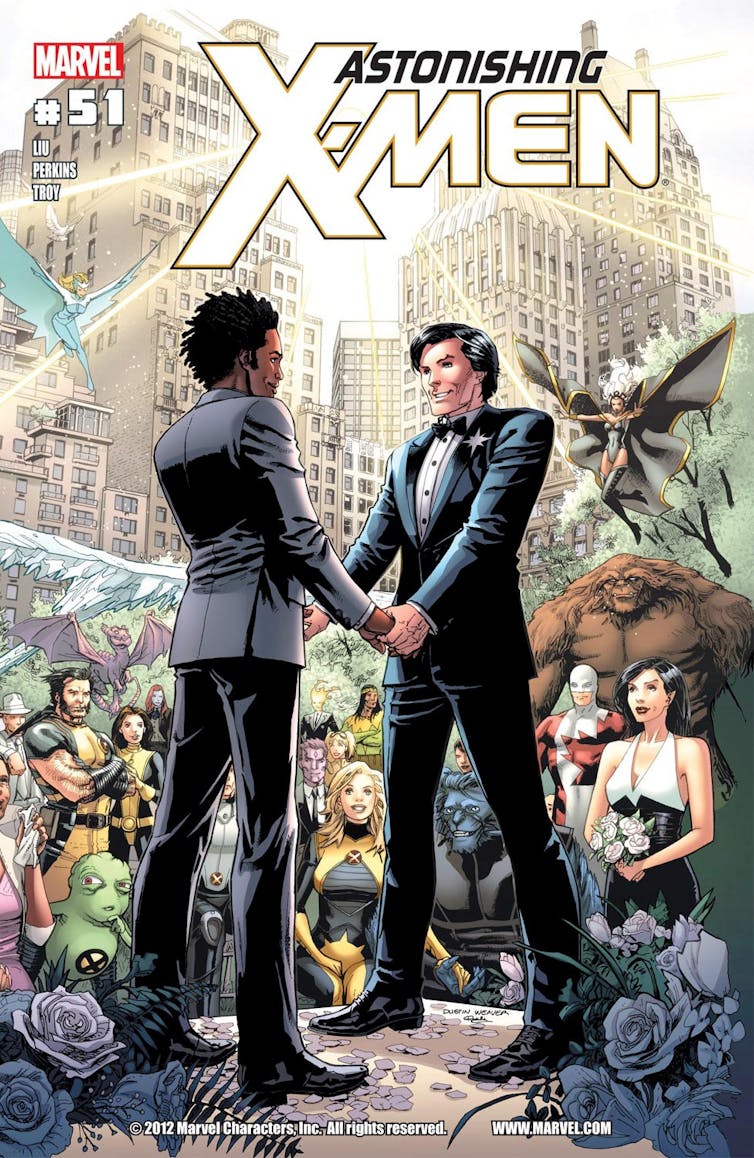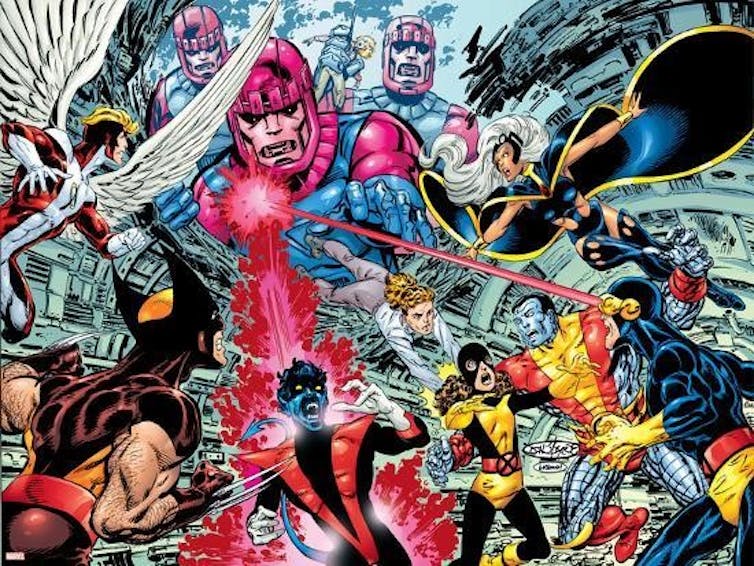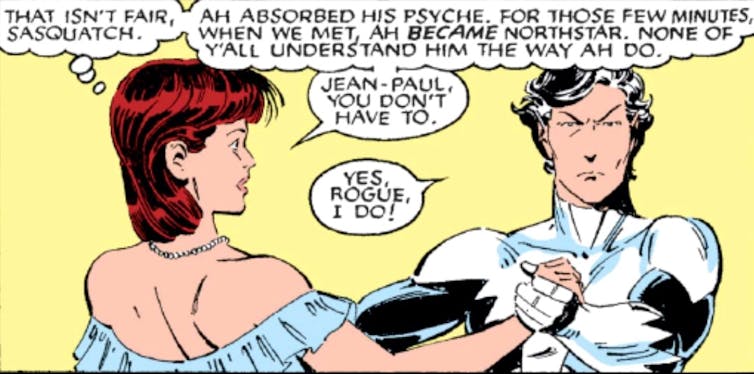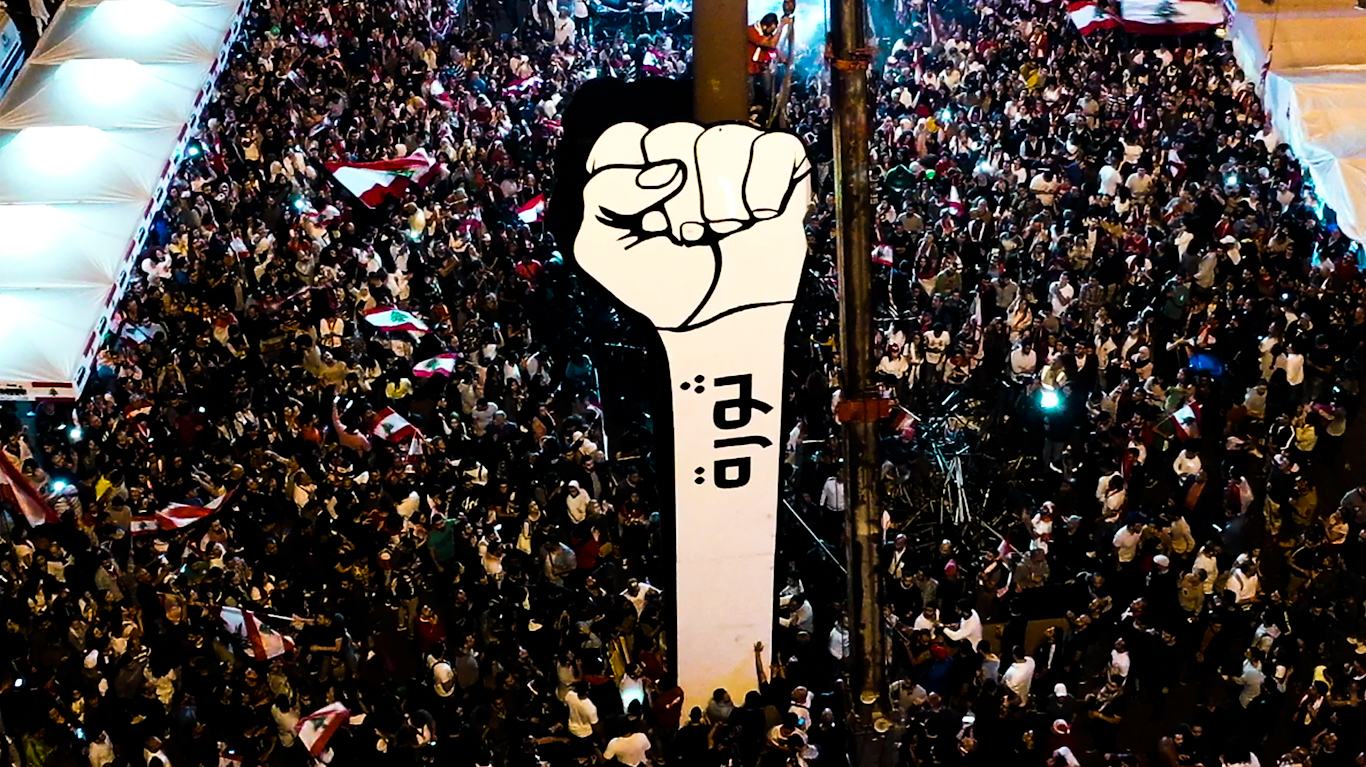
Since the 2010 Arab Autumn, it has become clear that leaderless revolts only have two inevitable outcomes. In the first, a game of musical chairs between right-wing imperialist forces will be played and only superficial change will be achieved, like in Quebec, Egypt, Tunis, and Sudan. The second possibility, a right-wing contra war will take hold of the country, as it did in Libya, Syria and Yemen.
In both situations, two factors impede the possibility of genuine progressive change from crystallizing: a lack of revolutionary television broadcasting that can control messaging, and the lack of a political vehicle in the form of a party and leadership to capitalize on that revolutionary media. Without both, real change cannot be achieved.
If a popular protest movement doesn’t have control of mass media, it cannot control the message, and if it doesn’t have a political vehicle and inspirational leadership, it cannot control the outcome.
Quebec’s protest movement had some semblance of its own media yet it lacked a political vehicle. The outcome was ultimately right-wing control. In Lebanon and Iraq, popular protest movements lacked both access to the media and a requisite political vehicle. To expect a different outcome than was seen in Quebec, Sudan – or Syria for that matter – is borderline delusional or based on some supremacist ideal that Lebanon is different than the rest of humanity.
I served as the Executive Director of CUTV, a small community television station in Montreal, Canada between 2010 and 2013. My experiences there provide critical insight into the importance of mass media and political vehicles for the success of a popular revolt. Since that time, I have been building on this experience in order to support popular protest movements around the world, including in Lebanon, my home since 2018.
Quebec 2012
In 2012, the Liberal-Federalist party had control of the provincial government of Quebec and Jean Charest, the province’s Premier, abruptly proposed raising college and university fees by 75 percent. As an executive at CUTV, which was located on the campus of the Anglophone (English) Concordia University, I heard murmurs from embedded reporters noting that students were organizing for a national strike. Events leading up to the strike indicated it would be different than usual. Student organizing in Quebec has historically been a fragmented sphere. English versus French student unions, college versus university, indigenous and “ethnic” versus white. This time, however, Anglo students were as fired up as the Francophone (French-speaking) students and indigenous students were pressuring the movement for inclusion.
Recognizing the brewing mobilization for a province-wide and unlimited general strike among students in Quebec, CUTV decided to investigate mobile live broadcasting technologies in hopes of providing a mass media platform that could carry the demands of the students to Quebecers. The so-called Arab Autumn was energized and manipulated by al Jazeera through live high definition broadcasts from a camera stationed atop a building near the square, complete with full journalistic packaging. The Occupy movement was energized by low quality mobile live broadcasting from cell-phones. We were looking to surpass both of these models.
We found solutions through burgeoning technologies at the time that allowed for high definition mobile broadcasting on cellular networks. We leased the equipment months before the general strike began in order to test and modify it to fit our needs. We deployed that tech with full journalistic packaging, the viewer was able to receive a full high definition broadcast with journalists conducting interviews and explaining events in both French and English, all live from the ground and mobilized to follow the action as it developed.
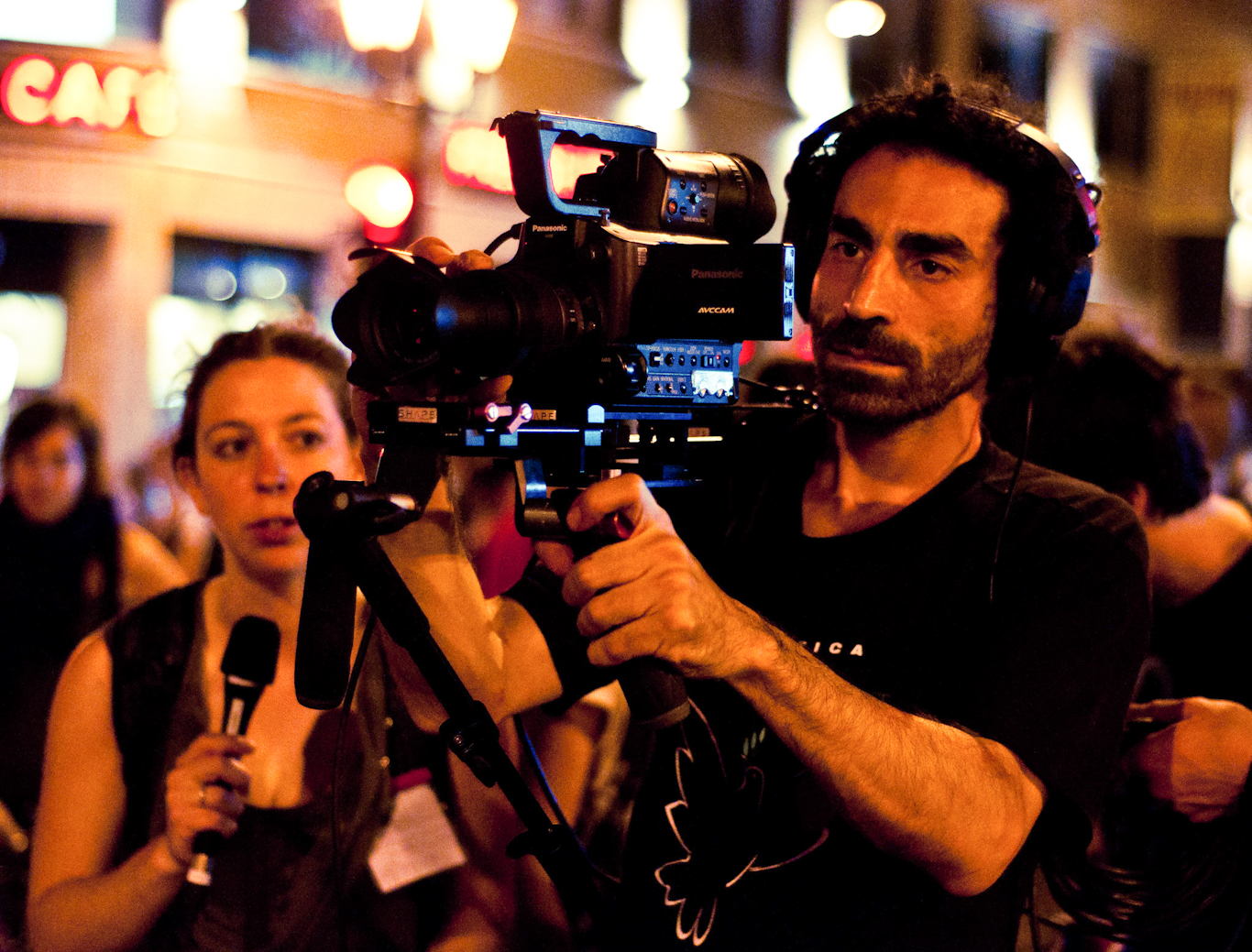
An exhausted Laith Marouf and his CUTV crew report live
from the ground in Montreal, May 20, 2012. Alexis Gravel | Flickr
from the ground in Montreal, May 20, 2012. Alexis Gravel | Flickr
This live mobile broadcasting created an echo chamber of sorts for the movement. More people were now joining demonstrations, in part, because of the broadcast and demonstrations were now getting longer and more frequent. This meant that we were broadcasting upwards of eight hours a day, this, during a strike that lasted for six months; the longest in the history of Quebec and of Canada.
Within weeks, our online stream was garnering 150,000 simultaneous unique viewers, and our small community website was clocking 2.5 million visitors a day. In comparison, mainstream media and news television stations, who had no political stake in amplifying the demonstrations, did not suspend regular programming and only covered the protests during their regular three times a day news broadcasts. Even then, according to viewer statistics, the maximum number of simultaneous viewers that news broadcasters in Quebec garnered was around 10,000. This meant that CUTV controlled the narrative of the movement, and all the mainstream media combined could not counter our messaging. After six months, thousands of arrests, tens of injured, and daily police attacks on striking students, (and our broadcasting team) the government resigned and called for an early election.
It was at this juncture that the popular protest movement in Quebec lost control of its messaging as it lacked a political vehicle, a political party with structure and leadership, to carry it into power. Like many protest movements since the Arab Autumn, the young Quebecers refused to elect leadership and were therefore unable to provide voters with an alternative in the coming elections. As expected, the Separatist French Supremacist “Parti Quebecois” capitalized on the moment and swept the elections. As the new premier was giving her acceptance speech, an Anglo Federalist mounted the stage and shot at her with a handgun, luckily missing the shot, yet striking home the reality that a fragmented society, even in the so-called first world, can easily devolve into an armed civil conflict given the right (or wrong) media diet.
Lebanon 2019
While the 2012 Quebec revolt had the privilege of a movement-oriented media to amplify its voice and managed the messaging and narrative in the public discourse; protesters in Lebanon had no such mechanisms.
When I arrived in Beirut in mid-2018, I was immediately approached by the country’s “left” parties and their associated media outlets. I had dozens of meetings, and in all of them, I emphasized the following: Lebanon was on the edge, the war in Syria had delayed any revolt, the last round of demonstrations in 2015 triggered by a garbage crisis was an indicator of a sill-glowing ember under the ash (or trash pile in this case) and that live mobile broadcasting capabilities were needed. In almost all those meetings, my pitch was received well and my ideas acknowledged. Yet nothing panned out as those parties and media hired consultancy firms or friends to supposedly deliver on the new multi-media strategy.
When the demonstrations started, it was clear that “left” had failed to prepare. In stark contrast though, both the pro-imperialist liberal media and their right-wing counterparts were well prepared for the would-be revolt.
In 2012, CUTV’s connections to the popular protest movement in Quebec and the information gathered while embedded with students allowed us to acquire requisite technologies, modify them to fit our needs, and train the crews on the new broadcasting and reporting models before any strikes were called. What was shocking in Lebanon was how just seven years later, TV stations like al Jadeed and MTV Lebanon were ready with the tech and training they needed to control the narrative of the burgeoning uprising without ever having used this model of reporting before. Al Jadeed had at least eight live units broadcasting across the country, MTV had at least six. Their crews were all trained and ready. Did they have prior knowledge of the would-be “revolt,” or were they informed by the power-brokers of what triggers could indicate a brewing movement?
In any case, what al Jadeed and others did was unprecedented in any country. Here you had corporate-owned stations suspending all regular programming, as well as advertising, and reporting live from the streets for upwards of eight hours a day.

A well-equipped Lebanese news crew takes cover from police tear gas in Beirut, Oct. 18, 2019.
Hassan Ammar | AP
Hassan Ammar | AP
Each broadcasting unit costs a minimum of $1,000 per 30 hours of broadcasting, add to that all of the drones, satellite trucks, journalists, technicians, camera operators, and anchors, and it becomes clear that such an operation cost these stations millions of dollars. Not to mention a substantial amount of lost advertising revenue. Why would profit-driven, corporate-owned stations take on such heavy costs if not for political gain? It was clear that these media outlets wanted the demonstrations to continue, and more importantly, wanted to control and manipulate their message and outcome.
Compare this to mass protests movements like those affiliated with the Black Lives Matter movement in the United States, or the Yellow Vest protests in France, or for that matter any popular protest movement in wealthy countries with an imperialist bent. In those countries, no corporate-owned or government-sponsored media ever suspend their regular programming or deploy live mobile broadcasting to cover popular protest movements. This, among other factors, is proof enough of the political motive of such coverage in Lebanon.
Progressive forces in Lebanon did not grasp this reality and allowed their movement to play into the hand of the country’s establishment media and outside influencers. These progressives, by adopting the motto of “all of them, means all of them” early in the demonstrations, put all of Lebanon’s domestic political parties, including Hezbollah, into the same boat as the corrupt politicians who impoverished the nation. This motto, parroted repeatedly by a media vehicle controlled by foreign power-brokers, meant that the anti-corruption movement was instantaneously diverted into a movement against the enemies of those same by foreign power-brokers.
In a world ruled by multimedia and multi-platform international media empires; a leaderless movement, one that doesn’t control any mass media platform or political party, will, without any doubt, be manipulated by those who do. To believe otherwise and to insist on leaderless movements, especially given the many years of experience we now have to draw from; is to be myopic and delusional, or worse, to be a tool manipulated by those who wish to take control of those movements.
Feature photo | Anti-government protesters install a large cardboard fist labeled “Revolution” in Martyr’s Square in Beirut, Lebanon, Nov. 22, 2019. Hussein Malla | AP
Laith Marouf is an award-winning multimedia producer and media policy and law consultant. His media work spans issues of liberation and decolonization from indigenous nations to Arab peoples, while his policy consultancy work is concentrated on building broadcasting capabilities for misrepresented and underrepresented communities the world over. Follow him on Twitter and Facebook.
The views expressed in this article are the author’s own and do not necessarily reflect MintPress News editorial policy.
